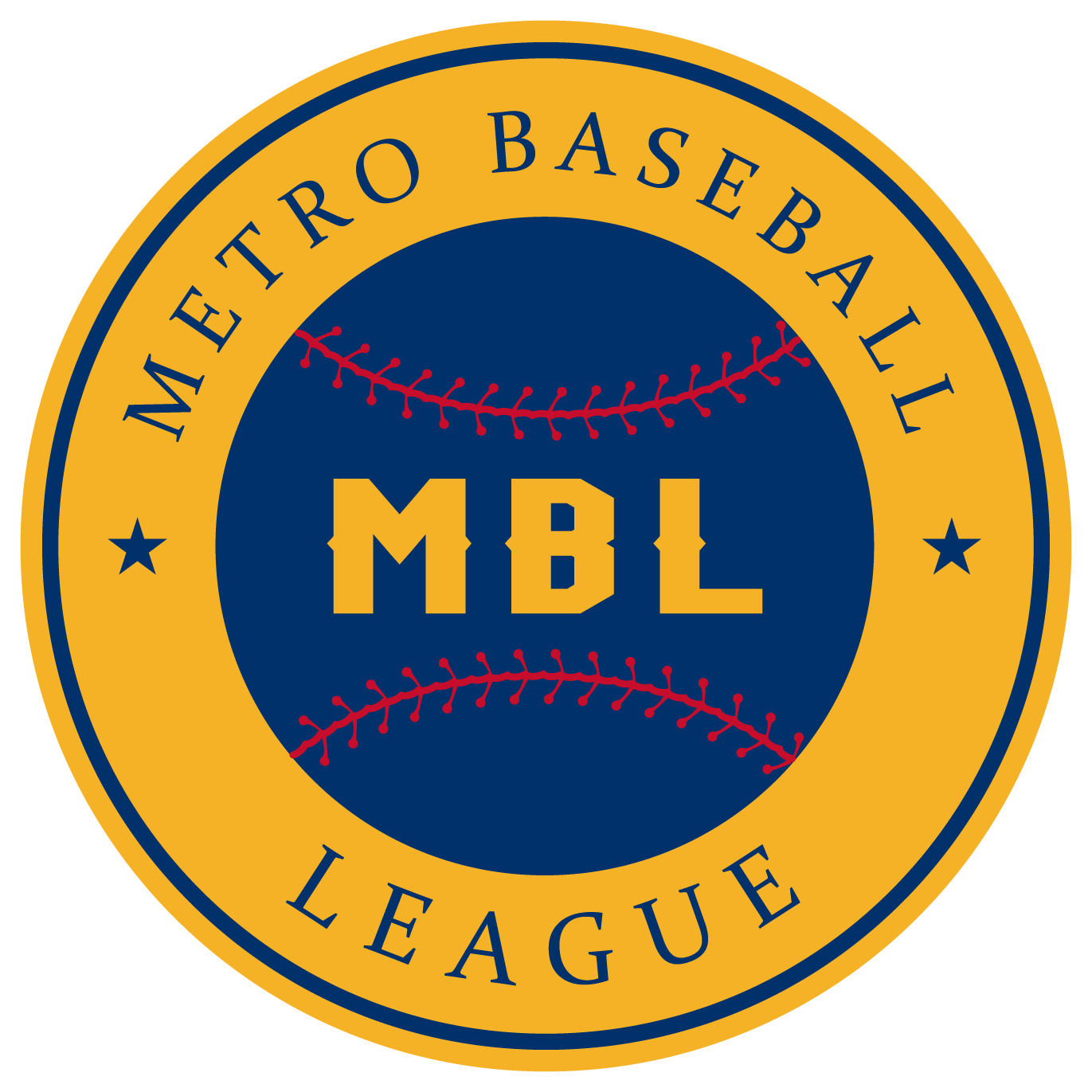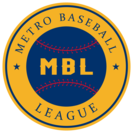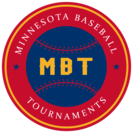Community/Rec 3rd Grade (9U) Rules

COMMUNITY RECREATION BASEBALL
2025 RULE MODIFICATIONS
3rd Grade/9U Division
Rules and regulations are in effect for the Metro Baseball League Community Recreation regular season and tournament play. The NFHS (National Federation of High Schools) Rules Book will govern all play, with the exception of select modifications listed in this document. Any situations that are not covered by the NFHS, MSHSL (Minnesota State High School League) or Metro Baseball League Community Recreation League rule modifications will be determined by the MBL Community Recreation Board of Directors. Said Board of Directors has the authority to make amendments to the modifications in this document.
QUICK GLANCE
* 6 innings or 1 hour-45 minute time limit (no new inning)
* 60' bases, 46' pitching rubber
* 6-run limit per inning
* Dropped 3rd strike is an out
* No leading off
* No stealing
* No Infield Fly Rule
* Pitching: 2 inn/game, 4 inn/week, no curveballs/sliders/sinkers
1. General
1.1 Game Start Time: Game start times will be published on the MBL web site. Travel directors will have access to edit the schedules. Depending on field availability, Visiting teams may take infield practice for 10 minutes, starting 30 minutes before game time. Home team may take infield for 10 minutes starting 15 minutes before game time. Coaches have discretion to adjust as desired.
1.2 Length of Game: 6 innings. Coaches may decide to play extra innings if daylight/time allow.
1.3 Time Limit: No new inning shall begin after 2 hours elapsed from time of first pitch. The next inning begins at the instant the 3rd out is recorded in the previous half inning (or the final run is scored, in leagues with limits on runs).
1.4 Coaches on Field: Coaches are allowed on the field as base coaches only.
1.5 Pregame Meeting/Ground Rules: Umpires and head coaches should meet near home plate before every game. Part of the meeting should be to define ground rules and dead ball territory.
1.6 Field Dimensions: Base length shall be 60’. Pitching distance shall be 46’.
1.7 Abuse of Officials: There is a ZERO TOLERANCE POLICY for any abuse of officials. Umpires are scheduled for all games by each host community. Many umpires at the youth level are inexperienced and still learning. There are absolutely no emotional outbursts allowed toward umpires. This includes yelling, badgering or trying to influence a call by a player, coach or spectator.
2. Scoring
2.1 Runs per Inning Limit: A half inning ends when 3 outs are recorded or a maximum of 6 runs are scored. Even if a team is mathematically eliminated because of this rule, teams continue playing, so long as the game is inside the time limit.
2.2 Tie Games/Extra Innings (Regular Season): At coaches’ discretion, a tie game may continue to extra innings if daylight/time limit allows.
3. Batting
3.1 Batting Order: Every player present will be put in the batting order, whether that player has a defensive position or not. NFHS batting out of order rules shall apply, with the proper batter being called out. No runs are counted for any players batting out of order. If someone is late arriving to the game they must be placed at the bottom of the batting order. They will hit when it is their turn.
3.2 Player(s) Removed from Lineup: If a team starts the game with more than 9 players in the batting order and is forced to remove a player because of injury or any other reason, that spot in the order is skipped; an out is NOT recorded.
3.3 Thrown Bats: Batters may not throw bats after swinging or for any reason. Batters will be warned the first time they throw the bat. Scorekeepers are to mark it in their scorebooks. If the batter throws the bat a 2nd time, that player shall be called out, the play shall be dead and all base runners return to the bases they were on at the time of pitch. Continued display of poor sportsmanship of this nature may result in the player being benched for the rest of the game and a possible review by the league board.
3.4 Walks: Standard NFHS walk rules will apply.
3.5 Hit By Pitch: Standard NFHS hit-by-pitch rules will apply.
3.6 Dropped 3rd Strike: Batter is out.
3.7 Infield Fly Rule: No Infield Fly Rule at 3rd Grade/9U level.
3.8 Butting: Bunting is allowed. It is recommended to be used minimally.
3.9 Bat restrictions:
Max barrel = 2 3/4”
Weight differential = Unlimited
Weight Differential is determined by taking the length of the bat and subtracting the weight. For example: A 30” bat that weights 20 oz has a weight differential of minus 10.
4. Baserunning
4.1 Leading Off: Leading off is not allowed at the 3rd Grade/9U level
4.2 Stealing: Stealing is not allowed. Runners may not leave a base until the ball has crossed home plate. For initial violation the umpire will issue a warning to the runner. If the same runner leaves early a 2nd time, the umpire will call the runner out.
4.3 Passed Balls: Runners may not advance on passed balls. No stealing.
4.4 Overthrows: An overthrow that remains in live ball territory is live and runners may advance at their own risk. Standard NFHS rules will apply on any throw that goes into dead ball territory. On a first play in the infield where the throw goes out of play, all runners and batter-runner are awarded 2 bases from time of pitch.
4.5 Infielder Possession: On a hit to the outfield, runners may advance at their own risk. When the ball is thrown to the infield and is in possession of an infielder, runners may only advance an additional base if were en route to the that base when the ball was secured. (umpire’s judgment).
4.6 Pregame Meeting/Ground Rules: Umpires and head coaches should meet near home plate before every game. Part of the meeting should be to define ground rules and dead ball territory.
4.7 Sliding: Head-First sliding is not allowed. Head-First “diving” back into a base is not considered to be a head-first slide. The intent is to avoid injury to both the runner and fielder. For first violation, a warning shall be issued. Second violation by same player, runner is out.
4.8 Baserunning / Interference: A runner must avoid contact with a fielder that is attempting to make a play on them. This can be accomplished by sliding, stopping or otherwise avoiding contact. Leaping or hurdling are not allowed. Failure to avoid contact by the runner will result in an out. Runners who leave the 6-foot baseline when a play is being made on them will be called out.
5. Pitching
5.1 Pitching Restrictions: For regular season play, a player may pitch a maximum of 2 innings in any game and 4 innings per week. One pitch in an inning constitutes 1 inning pitched.
5.2 Pitch Selection: Pitchers are not allowed to throw any type of curve, slider or sinker or any pitch that deliberately snaps, twists or exerts pressure on the wrist, elbow or arm. One warning will be issued. On the second violation, the player will be removed from the game. Underhand pitching is not allowed. Underhand pitching in not allowed.
5.3 Warm-up: Five warm-up pitches are allowed before each inning. Additional pitches are allowed for relief pitchers that have not had the opportunity to warm-up.
5.4 Intentional Walks: Intentional walks are not permitted.
5.5 Balks: Balks will not be called. Pitchers must make contact with the pitching rubber when delivering their pitch.
5.6 Charged Conferences / Mound Visits: One coaching trip to the mound is allowed per pitcher per inning. On the second trip in an inning, the pitcher must be removed from the pitcher position.
5.7 Pitcher Re-Entry: A pitcher may be removed from the pitcher position and re-enter at the pitcher position one time during regulation play provided they have eligible innings left. If a pitcher is removed in the middle of an inning, the player cannot pitch in the same game but may play any other position.
5.8 Extra Innings: If a game goes into extra innings, pitching limits apply and continue.
6. Defensive Play / Fielding
6.1 Player Positioning: Teams play 9 defensive positions. All players should get the opportunity to play all positions during the season. For safety reasons, some players may not be placed at Pitcher, Catcher or 1B based on coaches’ discretion. Coaches should discuss this with the players’ parents.
6.2 Outfield Positioning: Outfielders must be 20 feet into the outfield beyond the dirt infield when the ball is pitched.
6.3 Individual Defensive Positioning Requirements:
Max/game: 4 innings in infield, 3 innings in outfield
Max/game: 2 CONSECUTITVE innings in IF/OF per game
Max/game: 2 innings at same position
6.4 Innings Played: No player will sit the bench more than 2 innings per game and never consecutively. In the case where this is mathematically impossible (roster too big), every effort should be made to minimize the amount of bench time throughout the season.
6.5 Catchers: The catcher position is considered an “Outfield” position.
6.6 Obstruction / Fielder Interference: Fielders cannot block the base or base path when they do not have the ball or if the ball is not approaching them. A fielder always has the right-of-way when attempting to field a batted ball in the base path, and runners must avoid contact with the fielder. Runners are allowed to leave their base path when avoiding contact with a fielder in this situation.
7.0 Coaches, Players and Spectators Conduct
7.1 General Behavior: All coaches, players and spectators are prohibited from abusive shouting or use of obscene language and must adhere to the No Smoking and No Alcohol Policy on the field and surrounding area. Coaches and spectators who are intoxicated will be asked to leave. Violation of these rules will result in eviction from the field and review by the Board.
7.2 Badgering / Verbal Interference: Coaches, players and spectators are prohibited from trying to disrupt a player at bat or in the field (for example, by yelling “swing” to hinder the player at bat).
7.3 Clean Up: All coaches, players and spectators should ensure the field and surrounding area are free of debris and left in an orderly fashion when the game is complete.
7.4 Injuries: All players and spectators must report any injuries immediately to the coach. It is the coaches’ responsibility to report these injuries to the level coordinator. Possibility of injury requires that a responsible adult be present at all games and practices. If parents are unable to be present at a game or practice, it is their responsibility to find an adult to watch their child. This is not a duty of the coaches.
7.5 Umpires: Umpires are scheduled for all games by each host community. Many umpires at the youth level are inexperienced and still learning. There are absolutely no emotional outbursts allowed toward umpires. This includes yelling, badgering or trying to influence a call by a player, coach or spectator. This is a ZERO TOLERANCE POLICY.


